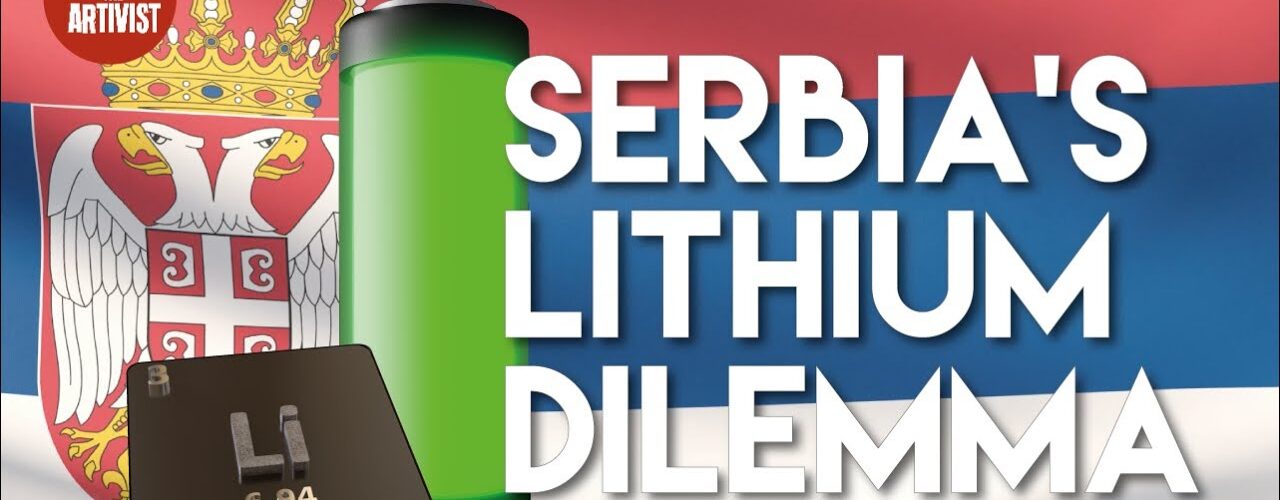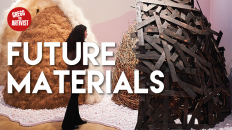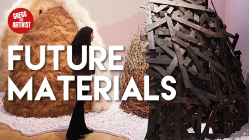Serbia’s timely Lithium discovery (10 minute read)
As the climate emergency pushes our transition towards a more sustainable future, our dependence on lithium will only increase. Research indicates that the global demand for lithium is expected to exceed supply by 2025.
It’s fair to think that Serbia may have hit the jackpot! Mining Lithium could be hugely beneficial to Serbia’s economic growth, and influence its position in the global arena and the green revolution. But at what environment and health cost? and why consider partnering with the controversial mining giant Rio Tinto?
In 2022, Serbia’s GDP per capita was just 9,394 USD, which is lower than the worldwide GDP capita of 12,607 USD. Furthermore, it is also significantly less than their EU neighbours at 32,318 USD. In December 2021, Serbia decided to halt a multi-billion investment from Rio Tinto in a lithium-borates mine and processing plant? The plant would have been the biggest in Europe. While making Rio Tinto one of the top 10 lithium producers in the world.
However, its reported that Rio Tinto spending millions buying properties in the mining area over the past year? And who is financially backing Slovakian startup InoBat, who in September this year announced it had selected a location for its gigafactory in Serbia for manufacturing and recycling batteries?
Jaradrite: A Unique Discovery – Too Good To Be True?
In 2004 a unique an exciting discovery was made in the beautiful Jadar Valley of Western Serbia. Exploration geologists from Rio Tinto Exploration discovered a mineral as small rounded nodules in drill core. Initially, they were confused as they couldn’t match it with any known minerals. However, after scientists at the Natural History Museum in London and the National Research Council of Canada conducted tests on it, they confirmed it as a new mineral. (3).
Named Jadarite, this unique material is not only exclusive to the area, but is unusually rich in both lithium and borates. Both which are valuable elements for various industrial applications (not to forget Batteries!). Since discovering it, Rio Tinto has explored and developed the Jadar deposit in western Serbia. (1). It had been the companies intention to begin extracting lithium from the Jadar deposit early this year (2023) (2).
So why has the Serbian government put the Lithium project on hold?
The Government decided put the project on hold, as it claims intensive public concern;
There have been several protests in Serbia against the proposed Jadarite lithium mining project. The largest protest took place on September 11, 2021, in Belgrade. Thousands of Serbs gathered in front of the parliament building to demand an end to the development of the lithium project . Approximately 30 different environmental groups organised the rally. Their influence has grown amid widespread concerns that pollution is worsening. Protesters blocked Branko’s Bridge, one of the city’s main thoroughfares, for an hour.
The protesters were demanding tougher environmental controls and an end to the development of the lithium project. The protesters carried signs reading “Serbia’s nature is not for sale”. And “No to concentrated sulphuric acid instead of raspberries and honey”.(4)
On November 24, 2021, about 2,000 protesters rallied in Belgrade against government plans to adopt laws on expropriation. Environmentalists believe these laws are designed to benefit foreign mining companies. The protesters were carrying signs that read “We will not give up our land” and “No to expropriation”. On January 3, 2022, hundreds of people blocked roads at several locations in Serbia. They protested a prospective lithium mine that they say will damage the environment.(4)
Mining the unique Lithium, Jaradrite: Are the public’s concerns valid?
The mining practices for Jadarite are different than normal lithium mining practices that already present, like all mining, environmental consequences. This is primarily because of the unique composition and properties of the mineral. The presence of boron in jadarite adds complexity to the mining process as it requires specialized extraction techniques. These techniques present a significant environmental threat due to the extraction process and the disposal of waste materials. And therefore, it poses threat to public health. A major concern among the Serbian citizens.
Mining Process not Environmentally Friendly
The mining process involves extracting large quantities of rock from the earth’s crust, including the removal of topsoil and vegetation. This can result in deforestation, habitat destruction, and soil erosion in the mining area. Not great, in a time when we face our climate and ecological emergency. The extraction of Jadarite also requires the use of explosives and heavy machinery, which contributes to noise and air pollution.
The process for Jadarite ore involves a series of steps to extract and refine the valuable lithium and boron. The process involves crushing the ore, grinding it into a fine powder, and then subjecting it to various chemical treatments and filtration processes. These steps require the use of chemicals and water, which can result in the generation of large volumes of wastewater and the release of harmful pollutants into nearby water bodies if not properly managed.
Additionally, the waste materials generated during the mining and processing of Jadarite, known as tailings, can pose a significant environmental challenge. These tailings typically contain high levels of heavy metals and other pollutants. Proper storage and management of pollutants is necessary to prevent soil and water contamination.
Overall, the mining of Jadarite has a larger environmental impact due to the destruction of habitats, soil erosion, air and water pollution, and the generation of waste materials. It is crucial for mining companies to implement sustainable practices and invest in mitigation measures to minimize these environmental impacts.
Who are Rio Tinto and what of their controversial past?
Rio Tinto is an Anglo-Australian, multinational mining corporation that has been in operation for over 140 years. They have a long history of mining various minerals, including copper, iron ore, diamonds, and uranium.
Rio Tinto is no stranger to criticism throughout its long history. From questionable labor practices and human rights, to environmental conflicts, their operations have often been the center of controversy.
Rio Tinto has faced criticism for its negative and careless environmental and social impact history in several instances.
5 examples of Rio Tinto’s Negative Impacts
Grasberg Mine, Indonesia: Rio Tinto was involved in the operation of the Grasberg mine in Indonesia, which is known as one of the world’s largest gold and copper mines. The mine has been associated with large-scale environmental damage, including deforestation and the dumping of tailings into surrounding rivers, causing pollution and impacting local communities’ access to clean water.
Ok Tedi Mine, Papua New Guinea: Rio Tinto had a stake in the Ok Tedi mine, which is known for its severe environmental impacts. The mine generated a significant amount of mine waste and tailings, leading to the devastation of the Fly River ecosystem and the displacement of local communities. Rio Tinto eventually divested from the mine due to public pressure and legal challenges.
Bougainville Copper Mine, Papua New Guinea: Rio Tinto was also involved in the Bougainville Copper Mine, which operated from 1972 to 1989. The mine’s operations caused significant environmental damage, including the pollution of rivers and the destruction of land through mining activities. This led to widespread social unrest and ultimately a decade-long civil war on Bougainville Island.
Juukan Gorge Cave Destruction: In 2020, Rio Tinto sparked outrage when it destroyed ancient Aboriginal rock shelters in the Juukan Gorge area of Western Australia. The caves had significant cultural and archaeological value, but Rio Tinto went ahead with the mining expansion project despite knowing the cultural significance.
Coal Mining in Mozambique: Rio Tinto’s coal mining activities in Mozambique have also been criticized for their negative social and environmental impacts. The company faced allegations of displacing local communities, destroying farmland, and causing pollution in water sources.
These instances highlight Rio Tinto’s track record of negative and careless environmental and social impacts. The company has faced widespread criticism and calls for accountability in relation to these incidents.
Serbia’s post war environmental and health impacts
Its worth noting Why Serbians are so concerned about the environment and their health. Serbians still suffer the environmental and subsequent health consequences of the NATO bombing during the Yugoslavian war in the late 1990’s. The Serbian public are no strangers to foreign nations playing a significant role in the degradation, pollution and contamination of their land and waters, and therefore their health which they continue to battle with, and will likely do so for generations to come.
The war in the 1990s had a significant impact on the health and environment of Serbia. The use of depleted uranium (DU) munitions by NATO forces during the 1999 bombing campaign
Just to mention…
The USA is reportedly supplying Ukraine with these Depleted Uranium munitions. Which is under heavy criticism…
They have been linked to ncrease cancer rates and other health problems among the population . The long-term effects of DU exposure are still being studied. However DU is known to cause kidney damage, birth defects, and other health problems.
In addition to DU exposure, the war also had a significant impact on air and water pollution in Serbia. The bombing campaign destroyed several industrial facilities next to heavy populated civilian areas, including oil refineries and chemical plants, which released large amounts of toxic chemicals into the environment . The pollution from these sources has been linked to an increase in respiratory problems, cancer rates, and other health issue .
The Lancet, a reputable medical journal, published an article in July 2021 that reported a 40% increase in cancer rates in Serbia since the start of the NATO bombing campaign. The article also noted that the incidence of leukemia had increased by 50% (5).
Another study conducted by the United Nations Environment Programme (UNEP) in 2001 investigated the possible environmental consequences of DU used in Serbia and Montenegro during the military conflict of 1999(6). The study found that DU is a potential health hazard if it enters the body, such as through embedded fragments, contaminated wounds, and inhalation or ingestion. This is because U’s radiation, while of high energy, penetrates poorly through tissues in the body (7)
Serbia’s Lithium conundrum
On one hand, there are several long-term problems, both social and environmental, associated with lithium mining in Serbia with Rio Tinto:
- Environmental Impact: The extraction of lithium often result in habitat destruction, soil erosion, water contamination, and deforestation. The surrounding ecosystems may suffer irreparable damage, leading to the loss of biodiversity.
- Water Scarcity and Pollution: Lithium mining requires significant amounts of water for processing and dust suppression. This could lead to increased water scarcity in regions already facing water stress. Additionally, the chemicals used in lithium extraction can contaminate groundwater and nearby water bodies, posing risks to aquatic life and human health.
- Air Pollution: Several techniques used in lithium mining, such as blasting and drilling, generate dust and particulate matter. These pollutants can have negative respiratory effects on both mine workers and nearby communities. Additionally, the transportation of lithium ore and chemicals used during processing can contribute to air pollution through emissions from trucks and machinery.
- Displacement of Local Communities: The establishment of mining operations often involves acquiring land, which can result in the displacement of local communities and loss of traditional livelihoods. The forced relocation of communities can lead to social and cultural disruptions, affecting the well-being of individuals and communities.
- Social Conflicts and Human Rights: Large-scale mining projects often face opposition from local communities who perceive their interests and rights being overlooked. Conflicts can arise over land ownership, compensation, and the overall impact on local economies and ways of life. Ensuring that the rights of local communities, including indigenous peoples, are respected and protected is crucial.
- Waste Management: Lithium mining generates substantial amounts of waste, including rock fragments, tailings, and chemicals used in the extraction process. Proper waste management is essential to prevent contamination and mitigate impacts on the environment.
National Security Threat?
If Serbia overlooks the potential national security threat related to the lithium reserves in the Jadar Valley, several concerns arise:
- Economic Dependence: Serbia could become heavily reliant on lithium imports for its energy and technological sectors if it doesn’t exploit its domestic reserves. This reliance on external sources may pose economic and energy security risks.
- Technological Development: Domestic lithium reserves could support the development of advanced and sustainable technologies. Ignoring these reserves may hinder technological advancements and innovation within Serbia.
- Geopolitical Considerations: Lithium is a strategic resource in the global economy due to its use in electric vehicle batteries and renewable energy storage. By not exploiting its lithium reserves, Serbia may lose opportunities to enhance its geopolitical standing and influence in the global arena.
Furthermore, during a discussion about national security and the Lithium, with a Serbian friend, they said… “if Serbia doesn’t mine it, who will? Serbia has a long history of invasion. Nearby neighbouring countries are being invade. Who’s to say someone else might come and take it?”
Where does the Lithium Project stand?
As of October 20923, the past months things have been quiet media wise, but in ticking along in the background it seems more is going on to push the project forward:
Since mid-2022, the year Serbia’s government revoked licences for the 2.4 billion USD lithium mine, In February 2023 a BIRN investigation reported that Rio Tinto has spent at least 1.2 million euros on land in the area that it hoped to exploit and is now offering financial aid to local firms in an apparent bid to win favour.
Furthermore, the Balkan Green Energy News reported in February 2022 an interview with a local school teacher. She claims “It’s skilled manipulation… they have been going from house to house offering again to buy land. They’re calling and texting people on their phones, they’re offering plastic furniture. How does the company have these people’s numbers? How do they know who to contact and where? This is a complete violation of privacy,”
InoBat Step into the picture
And in late September this year, Slovakian startup InoBat announced it had selected a location for its gigafactory for manufacturing and recycling batteries.
It is reported that InoBat said the Government of Serbia is prepared to offer an incentives package of EUR 419 million for project Lion.
One of the investors in InoBat is Rio Tinto. A number of other indications that the Jadar Valley mines project could be revived, so the deal with InoBat has the public believing this makes it even more likely.
One professor commented on the Balkan Green Energy article “Inobat has only one Li-ion prototype without any small factory? How they will built giga factory in Serbia. In their declaration with R. of Serbia it is obvious that lithium mining, and toxic recycling of spent battery is planed. Most of the 100 employees are marketing and financial experts? Without any production facilities for several years, and salaries more than 10.000.000 € paid, but from where without income”
Please leave your comments. I would love to hear your thoughts.
Learn More from these sources:
- https://en.wikipedia.org/wiki/Jadarite
- https://www.riotinto.com/operations/projects/jadar
- https://www.mining-technology.com/projects/jadar-lithium-borates-project-serbia/
- https://www.rferl.org/a/serbia-lithium-mine-protests/31455625.html
- https://www.thelancet.com/pdfs/journals/lanonc/PIIS1470-2045%2821%2900397-1.pdf
- https://www.unep.org/resources/assessment/depleted-uranium-serbia-and-montenegro-post-conflict-environmental-assessment
- https://www.iaea.org/sites/default/files/DU_Eng.pdf
If you liked this video, be sure to check out my video ‘Do Our Youth Really Care About The Climate Crisis?’
Click on link here to see the episode.
Follow me:
✅ Subscribe My Channel: https://www.youtube.com/greggtheartivist
✅Instagram: https://www.instagram.com/greggtheart…
✅Tick Tok: https://www.tiktok.com/@greggtheartivist









Add comment